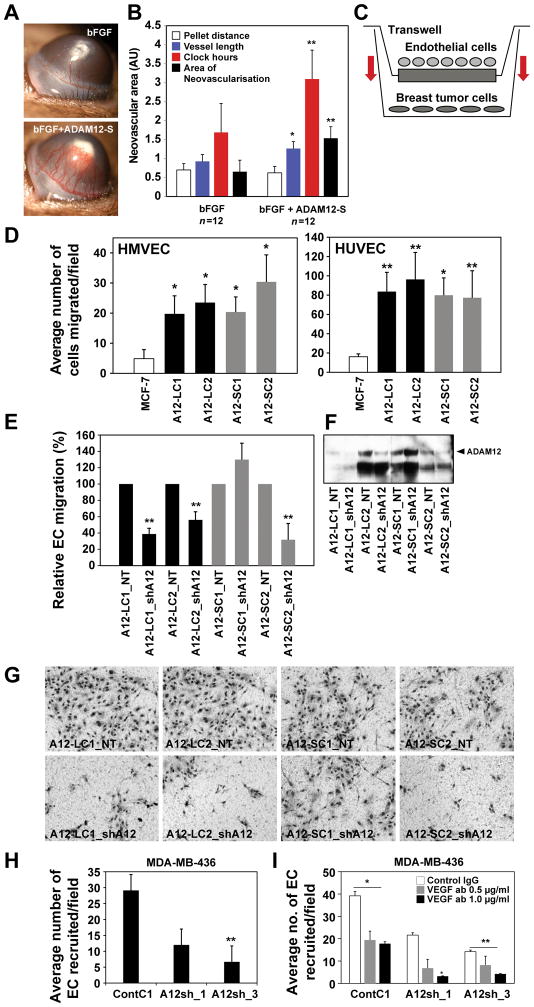Figure 3. ADAM12 induces angiogenesis.
In the mouse corneal pocket assay, rADAM12-S in combination with low levels of bFGF (A;bottom) generated a 2-fold higher angiogenic response in the cornea compared to bFGF alone. Vessel length, clock hours and total area of neovascularization are indicated (B;n=12/treatment, *P<0.05, **P<0.005). In co-culture studies (C), EC migrated at a faster rate towards ADAM12-L (black) and ADAM12–S (grey) expressing BTC compared to MCF-7 (white;D). EC recruitment was reduced when ADAM12 was silenced (E–G). EC recruitment was significantly reduced in MDA-MB-436 after ADAM12-silencing compared to control shRNA (H; 3 independent experiments, one way ANOVA; *P<0.05, **P<0.001). Combined targeting of ADAM12 and VEGF has a synergistic inhibitory effect on EC recruitment (I). MDA-MB-436 ContC1, A12sh_1 and A12sh_3 were treated with control IgG (1 μg/ml) or VEGF-neutralizing antibodies (0.5 μg/ml, 1.0 μg/ml) in the EC recruitment assay. EC recruitment was reduced after VEGF antibody treatment by ~50% in ContC1 cells, whereas ADAM12-silenced cells A12sh_1 and A12_sh3 displayed a ~40–80% further reduction compared to control IgG-treated conditions (I; results average of 2 independent experiments, *P<0.05, **P<0.0001).

